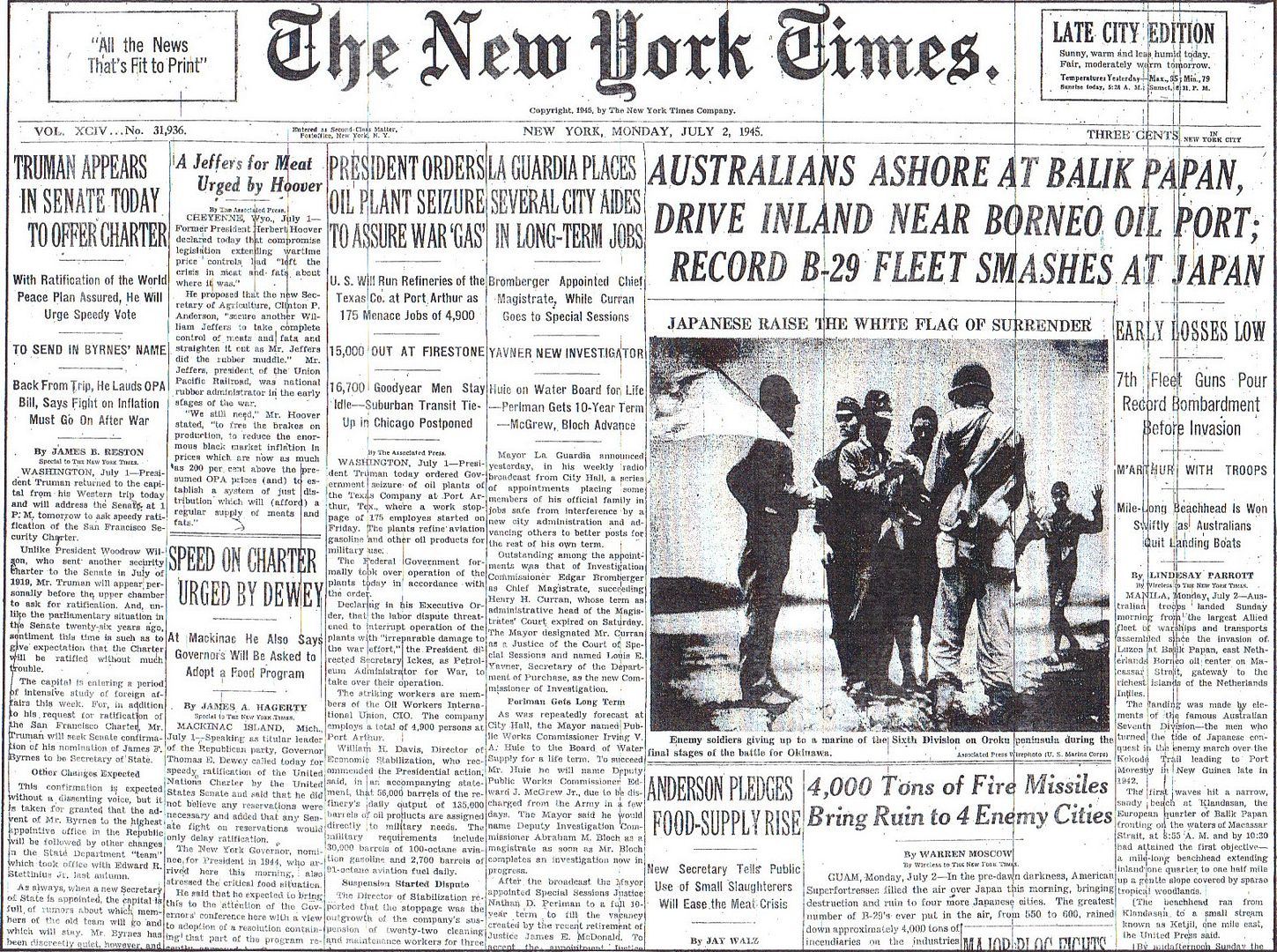
Posted on 07/02/2015 4:42:57 AM PDT by Homer_J_Simpson

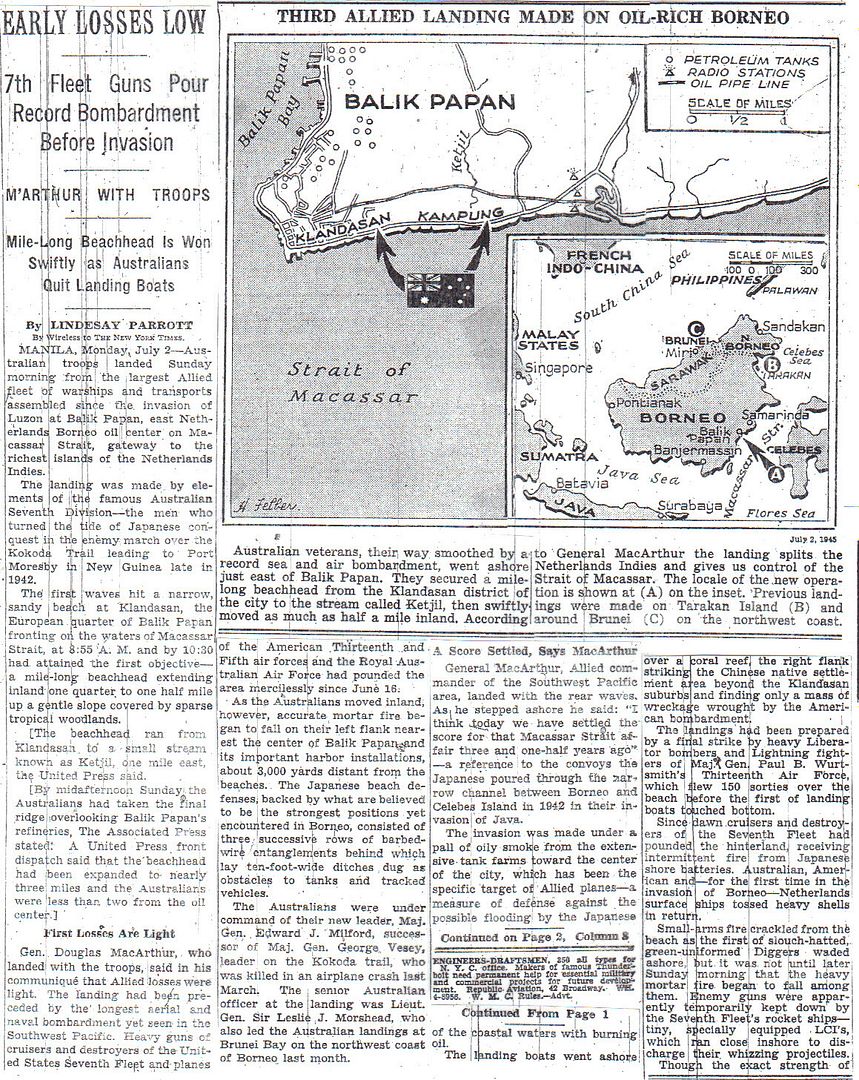


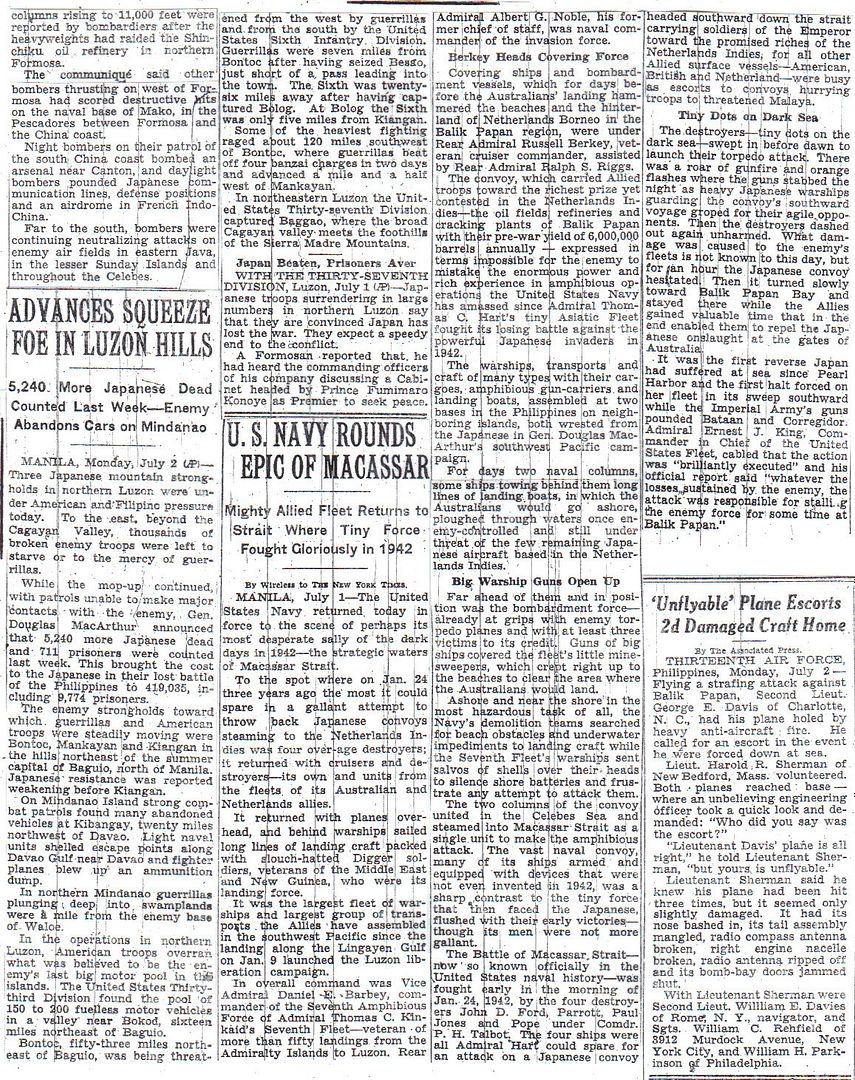
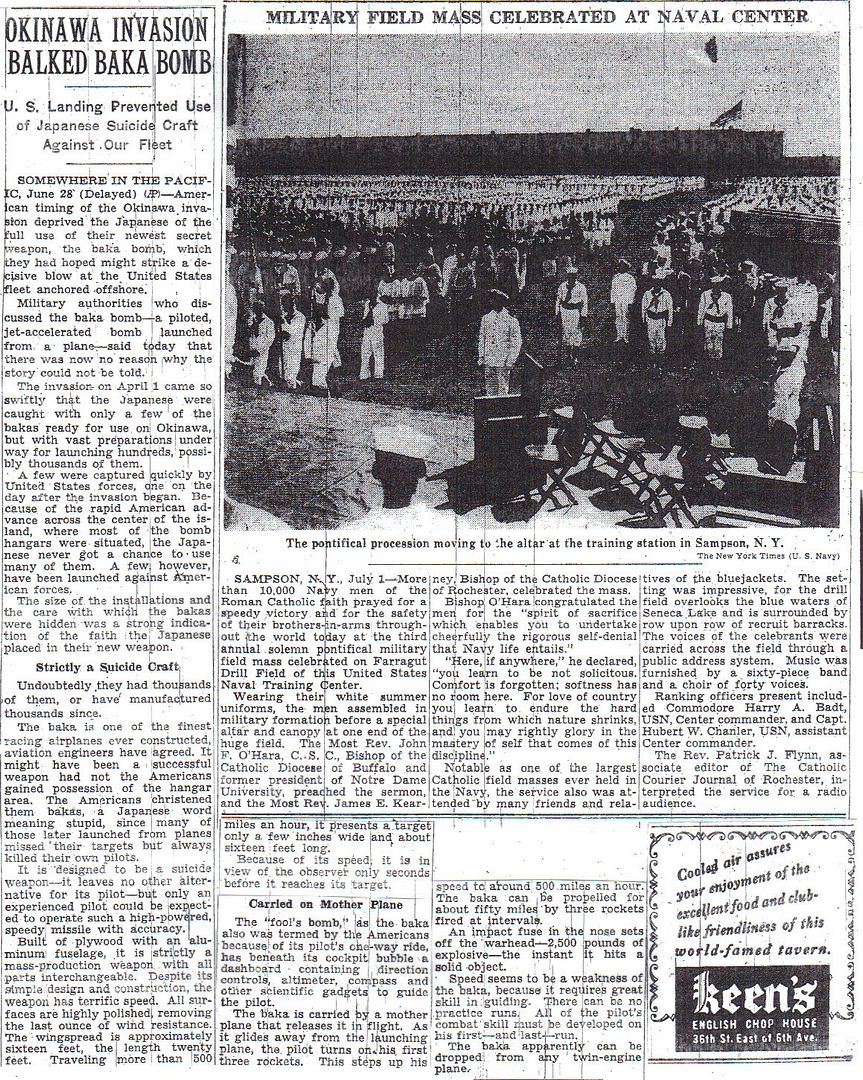
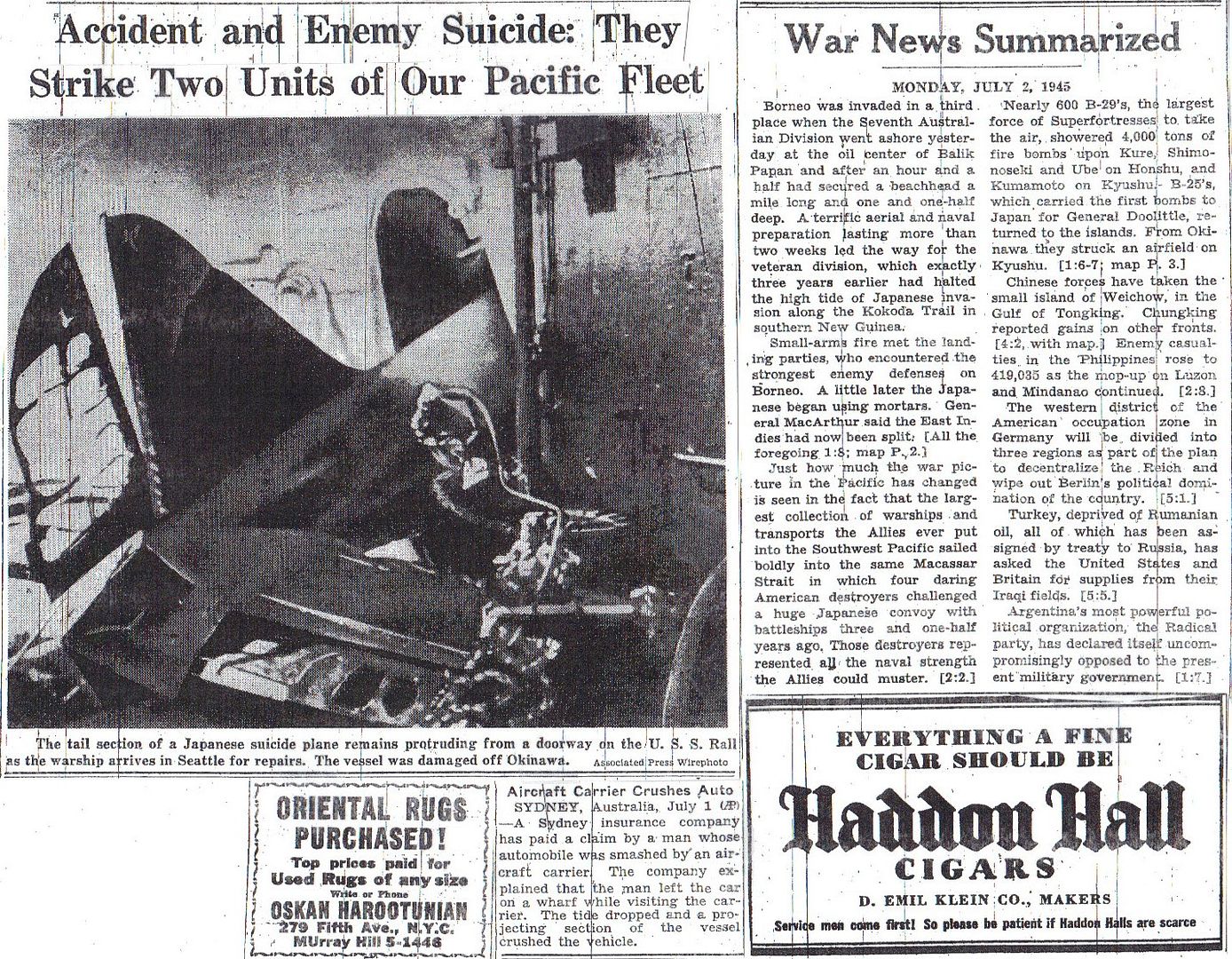
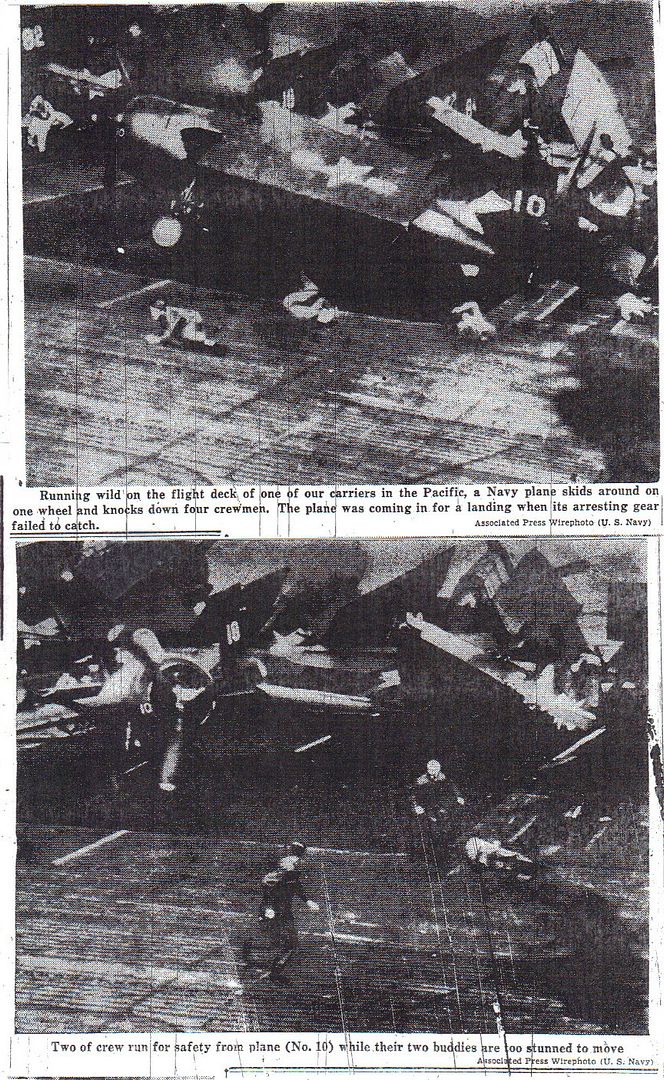

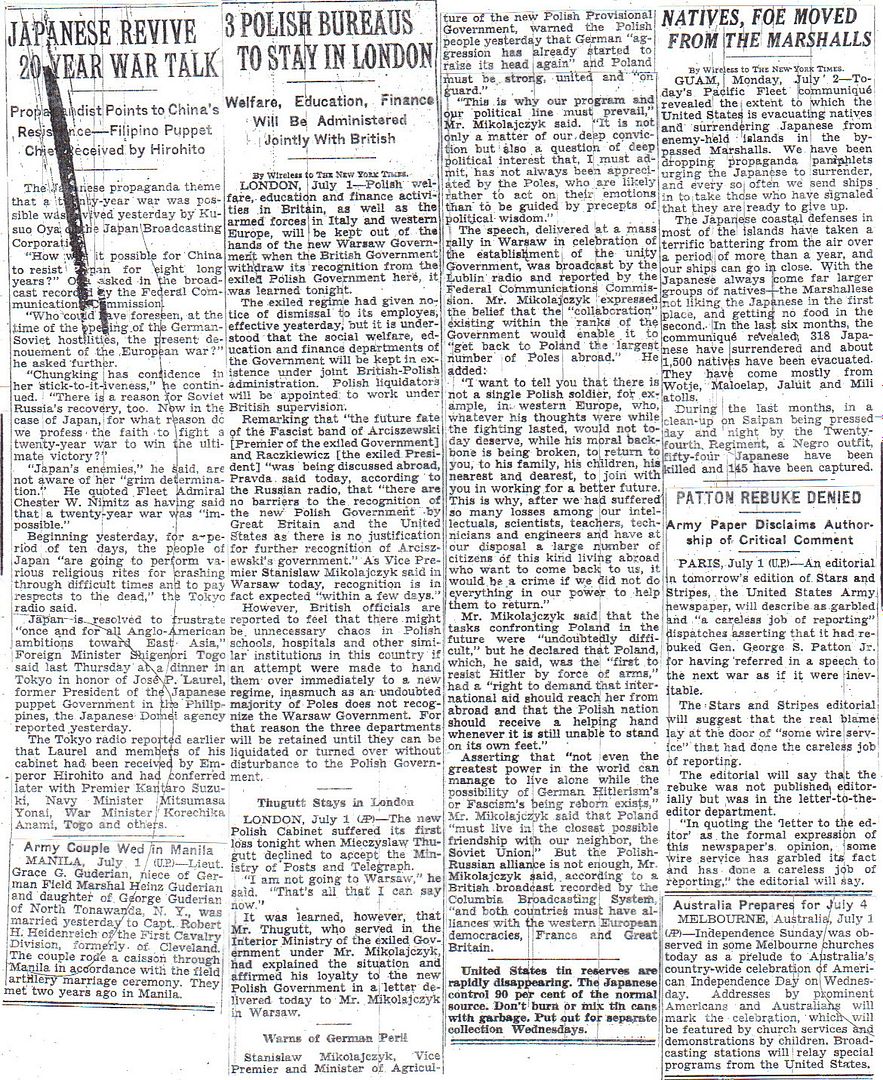
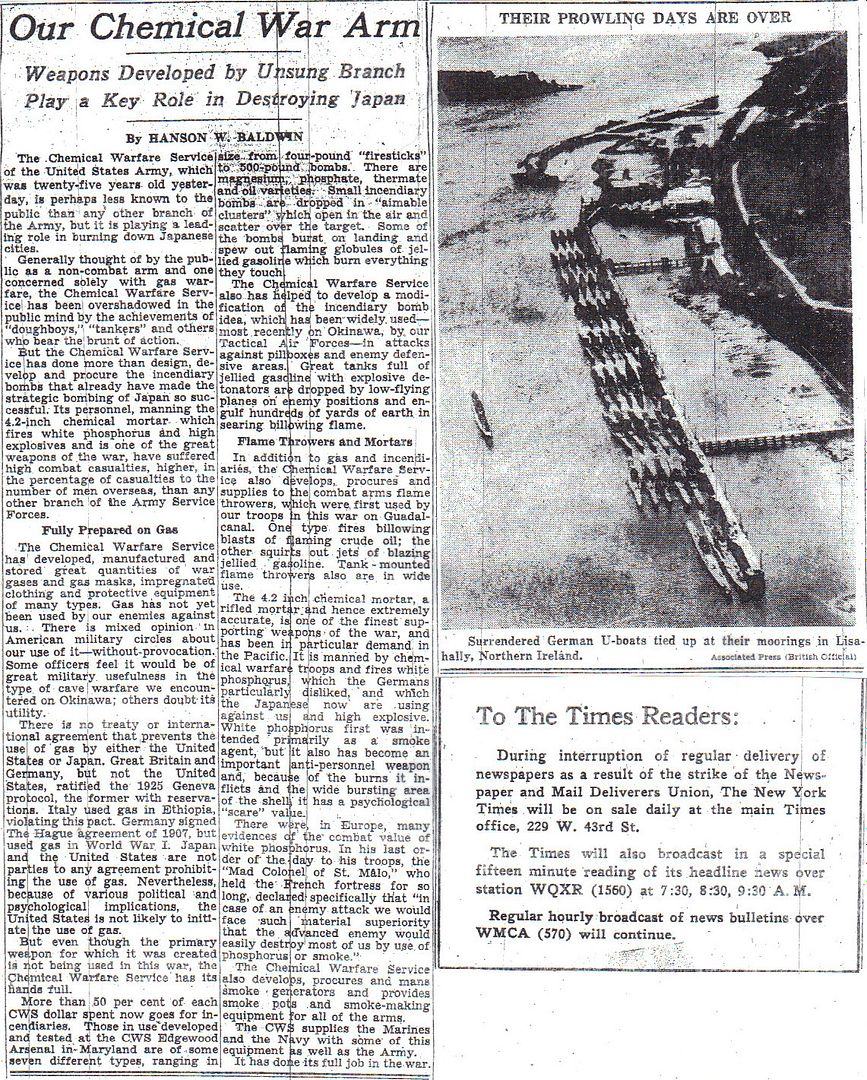
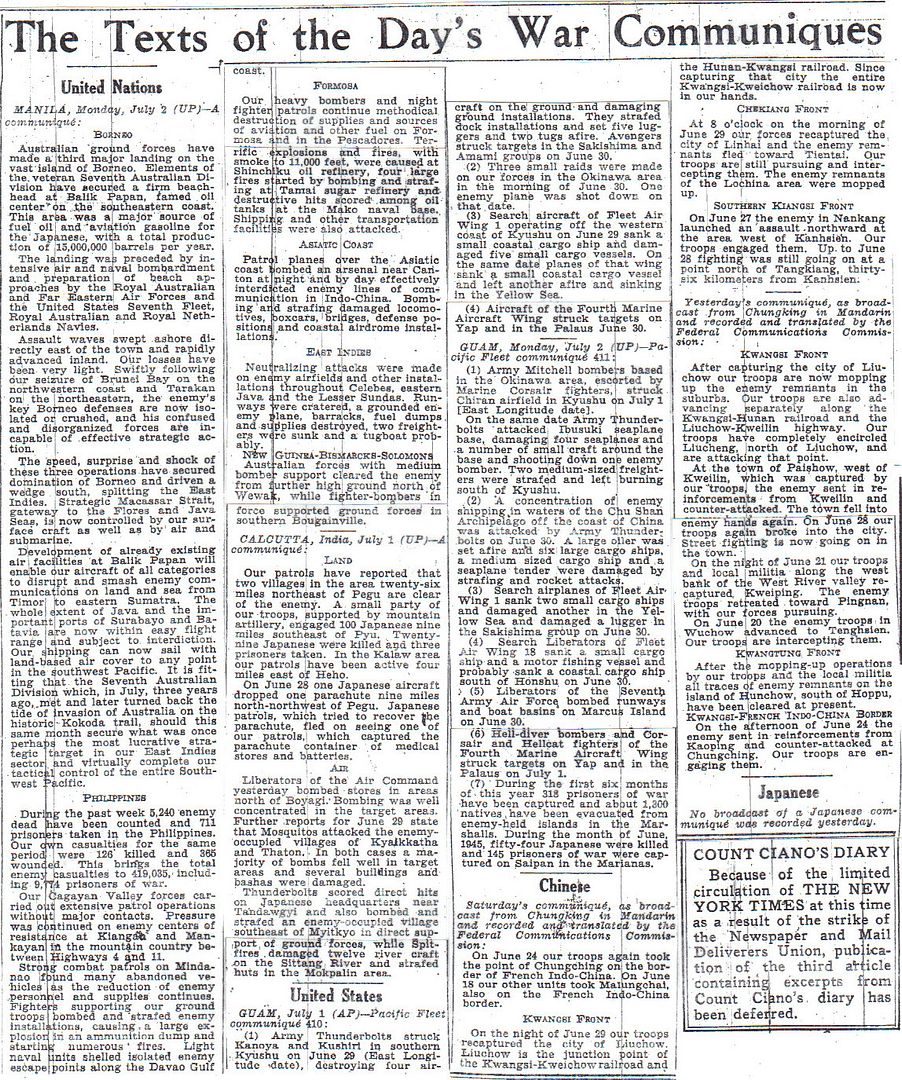
http://www.etherit.co.uk/month/6/02.htm
July 2nd, 1945 (MONDAY)
UNITED KINGDOM: London: Mountbatten is ordered to launch Operation Zipper, the liberation of Malaya in August.
GERMANY: A “Special Statement of Fact” memo to SMGO (Senior Military Government Officer) Det. F1H2, in the American Zone, is issued on the subject of an “Asylum at Kaufbeuren, Swabia”.
Although this is two months after the end of the war and the insane asylum was within “rifle shot” of a US Army Military Government detachment, inmates were still dying by the nurses’ actions of “slow starvation”, and “fast starvation.” “A more of less alive boy weighed 10 kilos.”
(Stan Sandler from [Det F1F3] “Special Statment of Fact, 2 July (sic), ibid., memo to SMGO [Senior Military Government Officer] Det. F1H2, Subject: “Asylum at Kaufbeuren, Swabia, 5 July 1945; memo, Regional Military Governor, Headquarters, Regional Military Government, Bavaria, Subject: “Report on Kaufbeuren (Murder Camp)”, 7 July 1945, RG 332, ECAD, 1944-45, box 54, “Detachment F1F3 folder. (Apparently the US Holocaust Museum also has documentation on this episode.))
JAPAN: During the night of 2/3 July, the Twentieth Air Force flies Mission 245; 39 B-29s bomb an oil refinery at Minoshima, Japan and one other hits and alternate target.
In the first mission of its kind, the submarine USS Barb (SS-220) surfaces and launches rockets at Japanese shore installations on Kaiyho Island.
BORNEO: The US Thirteenth Air Force supports Australian troops in Borneo. B-24s bomb defenses in the Balikpapan area, P-38s and carrier based Navy and Marine aircraft support Australian forces as they complete the capture of Balikpapan and its oil installations and B-25s hit the Bintula personnel area.
CANADA: Cruiser HMCS Ontario departed the Clyde for 4th Cruiser Sqn of the British Pacific Fleet.
Minesweepers HMCS Ingonish and Lockeport paid off and returned to RN at Sheerness.
Corvettes HMCS Orillia and Riviere Du Loup paid off Sorel, Province of Quebec.
HMC ML 092, 093, 097 and 099 paid off.
It seems so strange to be reading the NYT front page, after all this war news, putting out routine civilian stuff.
I'm sure that 'Super New Deal' socialism will work out fine for them in the long run.
Surrendered U-Boats
Excerpt:
25. As far as the Americans were concerned, there were two significant events in the month. First, on 1 July, an American seaman almost lost his life when a fire broke out whilst he was removing an electrical switch from U-2506 for use in U-2513. He was however saved by a German petty officer who volunteered to rescue him from the smoke-filled compartment. The second event was the formation of a society called “The Forgotten Submarine Bastards of Ireland” (FSBI). Many of the Americans were homesick and frustrated by what they saw as unnecessary delays in returning home with their two U-Boats, and this was a way of easing the tension. Membership cards were printed, and the initiation ceremony involved being rubber stamped on the right buttock with a design of shamrocks and the letters “FSBI”. Indeed, some even went as far as having it tattooed on, and very proud of it they were too.
58. Captain Roberts’ final words on the topic appear in his November Report:
“German prisoners have given no trouble and appear to be quite pleased at the forthcoming scuttling of their ships. The presence of numbers of Russian officers at Lisahally produced marked reaction”.
Those Greek inflation woes and austerity measures were like 70 years ago. They’ve put all that behind them.
I think the Germans were pleased they didn’t have to go down with their ships. A lot of their comrades did; for much of the late war, German submarines, once submerged, tended to remain that way.
DD 577 claims sinking midget submarine
http://worldwar42.blogspot.com/2011/08/world-war-2-japanese-suicide-submarines.html
The USS Underhill was hit by one: https://en.wikipedia.org/wiki/USS_Underhill_(DE-682)#Underhill_sinkinghttp://www.ussunderhill.org/html/about_uss_underhill.html
First, Kure is where the Yamato was built, along with other ships of the Imperial Japanese Navy. I don't think there is much shipbuilding going on there anymore, but there is a Yamato Museum (cf. here, mostly in Japanese). At the time of the bombing, there probably wasn't much industrial use to the town with the lack of materials for shipbuilding, so I suspect it was chosen primarily for payback.
Second, Kure is downwind from Hiroshima, so while being 10+ miles from the epicenter of the atomic bomb blast would have meant it sustained little to no damage from the blast itself, people there would have been affected by the radiation dust. I found this article about a court case concerning an Australian in Kure during the Occupation, who supposedly was affected by radiation sickness from the fallout.
Which leads to my final thought for the moment...the general perception given by presentations of the Hiroshima bombing was that the people were clueless, had no idea they were about to be bombed. Unless there was no communication going on at all, it wouldn't have taken a lot of brains to figure out that the bombing of the Chugoku area was leading right up to Hiroshima: Tokuyama, Kudamatsu, Kure, almost step by step down the coastline, and Hiroshima would be next. Of course no one there would have expected an atomic bomb, but what made them think they wouldn't be at least carpet-bombed like everyone else around them? Moreover, there was practically no food anywhere by this time, why hang around in the city when you might find something to eat in the countryside and on the mountains, figuring that the American bombers wouldn't be dropping bombs on villages, and American invaders would have to go up the mountains to get to you? In hindsight, it just doesn't make sense.
GERMANY: A “Special Statement of Fact” memo to SMGO (Senior Military Government Officer) Det. F1H2, in the American Zone, is issued on the subject of an “Asylum at Kaufbeuren, Swabia”.
Although this is two months after the end of the war and the insane asylum was within “rifle shot” of a US Army Military Government detachment, inmates were still dying by the nurses’ actions of “slow starvation”, and “fast starvation.” “A more of less alive boy weighed 10 kilos.”
The leaflets would be dropped over ten cities, and then four would actually be attacked. If there was anything to bring home to the Japanese people that they had no hope winning, much less surviving a continuation of the war, this should have been it.
Kure would not have received leaflets before this raid. I do not know if Hiroshima received any leaflets. Richard Frank makes no mention of it in his book "Downfall," and Hiroshima was not on any of XXI Bomber Command target lists. However, it was general knowledge in Japan that the B29s were wiping out every city down to a population of 100,000.
As for why bomb Kure when the IJN isn't building any more ships, there is an obvious two-part answer:
Because it is there, and because we can.
On a personal note, my father is celebrating his 23rd birthday on this date, as a corporal taking care of the radios on the airplanes at Harmon Field in Guam, including presumably those that were bombing Kure in my earlier post. He doesn’t know it, but he will be flown out of Guam in October because his widowed mother is supposedly dying from a heart attack, though she will go on to live for another 17 years. One of the unintended consequences of this is that he will see his girl in Philadelphia; they will get married the next February, move into the second-story walkup above a bakery in west Philadelphia, and he will become an electronics instructor teaching GI Bill veterans how to build and repair the latest in consumer electronics, the television. His favorite (only) son will wait until ‘54 to be born.
I think the Germans were pleased they didn’t have to go down with their ships. A lot of their comrades did; for much of the late war, German submarines, once submerged, tended to remain that way.
So did their families.
2 July 1945:
While returning to the forward areas by way of Eniwetok, USS MURRAY (DD-576) is ordered to locate, board and search TAKASAGO MARU bound for Wake and suspected of carrying contraband arms or war supplies.
3 July 1945:
MURRAY intercepts TAKASAGO MARU that is evacuating sick and wounded members of Wake Island garrison, but a search finds nothing in violation of international law. TAKASAGO MARU is allowed to proceed to Wake.
7 July 1945:
USS MCDERMUT-II (DD-677) is sent to intercept TAKASAGO MARU and divert her from a course which would take her into Task Force 38’s fueling area.
8 July 1945:
TAKASAGO MARU is located and a boarding party is dispatched with a message guaranteeing safe conduct if Captain/S Kakisaka and his crew comply with instructions and courses given. TAKASAGO MARU is carrying 974 patients.
10 July 1945:
TF 38’s ships complete refueling and depart to conduct air strikes against Tokyo. MCDERMUT-II releases TAKASAGO MARU to continue on her way.
25 July 1945:
Maizuru. Aircraft from AG-88 of USS YORKTOWN (CV-10) attack shipping in the harbor, but TAKASAGO MARU is not damaged.
http://www.combinedfleet.com/Takasago_t.htm
E 1947-1956:
TAKASAGO MARU makes many repatriation shuttle runs between Nakhodka, Siberia and Maizuru evacuating Japanese POWs from Soviet concentration camps in Siberia. [5]
23 March 1956:
Sold to Namura Shipbuilding, K. K., Osaka for scrapping.
1956:
Osaka. Scrapped.
Repatriation info from the above site:
[4] Allied occupation forces were responsible for the return of six million Japanese military personnel and civilians from Japan’s defunct far-flung Empire. In addition, there were over a million Korean and about 40,000 Chinese prisoners and conscript laborers and approximately 7,000 Formosans and 15,000 Ryukyu Islanders to be repatriated.
Some Allied and many former IJN warships, from aircraft carriers to kaibokan, were used to facilitate the enormous repatriation effort. Japanese vessels and crews were used to the fullest extent possible to conserve Allied manpower and accelerate demobilization. Each ex-IJN ship first had to be demilitarized; guns removed or, in the case of large warships, barrels severed, ammunition landed, and radar and catapults removed, if fitted. Repatriation of the Chinese on Japanese ships began early in October from Hakata, but U.S. guard detachments had to be placed on many ships to prevent disorder because the Japanese crews could not control the returnees.
Japanese-run repatriation centers were established at Kagoshima, Hario near Sasebo, and Hakata near Fukuoka. Other reception centers were established and operated at Maizuru, Shimonoseki, Sasebo, Senzaki, Kure, Uraga, Yokohama, Moji and Hakodate. Allied line and medical personnel supervised the centers. Incoming Japanese were sprayed with DDT, examined and inoculated for typhus and smallpox, provided with food, and transported to his final destination in Japan.
[5] The Russians, like the Japanese had, viewed POWs as a valuable slave labor force. For this reason, the Russians stalled on repatriation of Japanese POWs. When they finally began repatriations in December 1946, initially the Russians released only the sick and weak.
Disclaimer: Opinions posted on Free Republic are those of the individual posters and do not necessarily represent the opinion of Free Republic or its management. All materials posted herein are protected by copyright law and the exemption for fair use of copyrighted works.